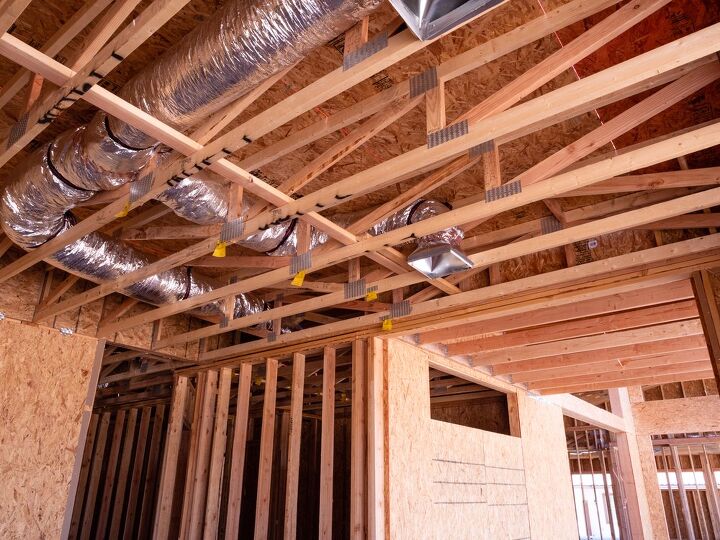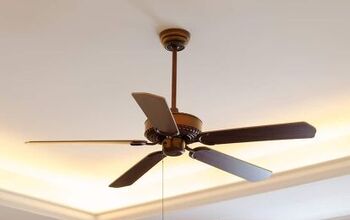Flexible Ductwork Vs. Rigid Ductwork: What Are the Major Differences?

The HVAC system in your home is one of the most crucial components of the entire structure. No matter where you live, you will have need of heating, cooling, or both more than likely. When your HVAC system is working optimally, you don’t even notice other than the fact that you live in comfort.
Despite the fact that we never see the ductwork, it plays an integral role. There are pros and cons to both flexible and rigid ductwork. Flexible is much cheaper and quite a bit easier to install, though it is important that any bends or kinks are removed. Rigid ductwork is more costly, though it tends to be more durable and more resistant to mold growth than flexible ductwork.
Do You Need Ducts or Vents Installation or Replacement?
Get free, zero-commitment quotes from pro contractors near you.

The Importance of Ductwork
When we think of our HVAC systems, most of us tend to think of the unit itself. But the ductwork is just as vital to a fully functional HVAC system as any of the other components. The ducts are what allows the air to travel from the central unit out into the rest of the home.
There are pros and cons to each form of ductwork and it is important to weigh them against the unique aspects of your property. Traditionally, rigid ductwork is the most commonly found though flexible ductwork is becoming more and more common.
Flexible vs. Rigid: An Overview
It will probably seem quite obvious what the difference is between the two styles just by their names. Rigid ductwork, however, can come made up of different materials. The most common is sheet metal. There are also fiberboard and fiberglass-lined ducts. The latter is made from metal sheet ducts but has external and internal fiberglass lining.
Flexible ductwork, meanwhile, is obviously much more pliable. Generally speaking, these ducts are made from a bendable but quite durable plastic. Most manufacturers then cover that tube with some sort of fiberglass insulation. You would find this type of HVAC ductwork in spaces where rigid ductwork may not be practical or fit.
Installation
Perhaps the biggest difference between the two is in the installation. Flexible HVAC ductwork is much easier to install. Because it can bend and it is so lightweight, it is much easier to maneuver, particularly in tight spaces. The installation also tends to go much faster, which helps to reduce installation costs.
Metal ductwork, on the other hand, has a meticulous process of installation. Because the materials are heavier and more durable, they are also difficult to move around the job site. You can expect to pay a lot more to have rigid ductwork installed.
Air Resistance
Air resistance is key no matter what kind of ductwork that you choose. The more efficient the duct, the less air is able to escape out. This is where another major difference between the two types of ductwork comes into play.
Flexible ductwork creates more resistance to airflow. That is because they can crumple in different areas, which makes it more difficult for airflow to escape to its intended destination. If you have an inexperienced contractor perform the installation, it could lead to sections that sag, making airflow even more labored.
This is where rigid ductwork has a major leg up on the competition. Though it may be far more expensive to install, rigid ductwork is a lot more efficient, minimizing airflow resistance to very little. When your HVAC doesn’t have to work quite as hard, it becomes more efficient and saves on your utility bills in the long term.
Design
The best use of flexible ducts is to branch off of your HVAC system’s main assembly. They can be run anywhere throughout the building, carrying air into individual vents. They are also available in a plethora of different material options that can conform to the shape of the building. With silicone, stainless steel, rubber, and polyurethane, that means adapting to the structure.
Rigid ductwork is generally constructed using rigid sheet metal. That makes them more suitable to be the main pillar in a traditional truck-and-branch style of layout. Rigid ducts connect directly to the central units, distributing air to the different flexible branches where applicable.
Durability
This might be the greatest downfall to flexible ductwork. Simply put it is susceptible to poor installation more than anything else. A joint that has been improperly sealed, excessive length, or crumpled sections can all greatly reduce the durability of flexible ducts.
The single biggest reason that rigid ducts are more commonly installed is due to durability. They are built to last long-term, meaning you won’t have to perform repairs or replacements nearly as often as you would with flexible ductwork. It is a case of saving now on installation but paying in the long run.
Pros of Rigid Ductwork
The most obvious pro to going with rigid ductwork is the durability. The installation might be more expensive than flexible ductwork, but you will save on maintenance, repairs, or duct replacement in the long run.
Sheet metal ductwork is also much more resistant to dangerous bacterial and mold growth. The last thing you want in your ductwork is something like mold as it can cause serious respiratory issues in the long term.
Cons of Rigid Ductwork
The biggest con to rigid ductwork installations are the initial costs. The materials are more expensive, heavier, and more difficult to install. Because of the increased difficulty of the installation, that leads to much higher installation costs.
In the case of rigid ductwork that has fiberglass in it, the fiberglass can and will deteriorate over time. As the fiberglass deteriorates, it releases fiberglass particles into the ducts which then get distributed into the air. That can lead to negative health effects over time.
Pros of Flexible Ductwork
The biggest pro for flexible ductwork is in the installation costs. The materials are much lighter and pliable, meaning they are easier to install. An easier installation means a quicker installation, all of which saves money.
Flexible ductwork is ideal in spaces where rigid ductwork cannot fit. Depending on the style of the home or building, flexible ductwork may be required to run air into a specific vent or room.
Cons of Flexible Ductwork
While they are definitely cheaper to install, flexible ducts are also susceptible to improper installation. If flexible ductwork is installed wrong, it can kink or bunch up, which increases air resistance. When there is greater air resistance, it decreases the efficiency of the HVAC system exponentially. That means the HVAC system has to work harder, resulting in higher utility bills.
Durability is also another major detriment of flexible ducts. Because they are flexible and susceptible to kinking or knotting, they can split and tear. You are far more likely to require repairs on flexible ductwork than you would on rigid ductwork. That also mitigates the “savings” of the cheaper installation.
Do You Need Ducts or Vents Installation or Replacement?
Get free, zero-commitment quotes from pro contractors near you.

The Final Word
While the two different types of ductwork serve the same purpose, there are distinct differences to them besides what their name belies. Each has its own distinct set of benefits as well as its own set of detractions.
Flexible ductwork is both easier and cheaper to install. That said, it is potentially susceptible to kinks and bends. It also fosters mold growth far more commonly than rigid ductwork. Flexible ductwork would be ideal in spaces where rigid ductwork can’t fit.
Rigid ductwork, meanwhile, tends to have fewer durability issues and is even better at preventing mold growth. It is more expensive and difficult to install but is generally the preferred option in traditional single-family homes.
If you have the choice between the two in a new build, you might be best served to go with rigid ductwork. They tend to be more durable, easier to clean, and having the mold deterrent is another added benefit.

Ryan Womeldorf has more than a decade of experience writing. He loves to blog about construction, plumbing, and other home topics. Ryan also loves hockey and a lifelong Buffalo sports fan.
More by Ryan Womeldorf














![10 Best Electric Lawn Mowers - [2022 Reviews & Top Rated Models]](https://cdn-fastly.upgradedhome.com/media/2023/07/31/9070486/10-best-electric-lawn-mowers-2022-reviews-top-rated-models.jpg?size=350x220)












